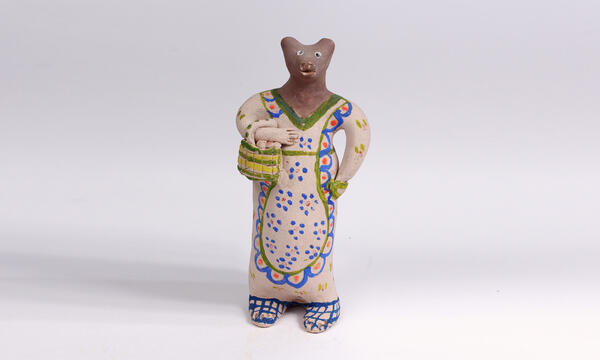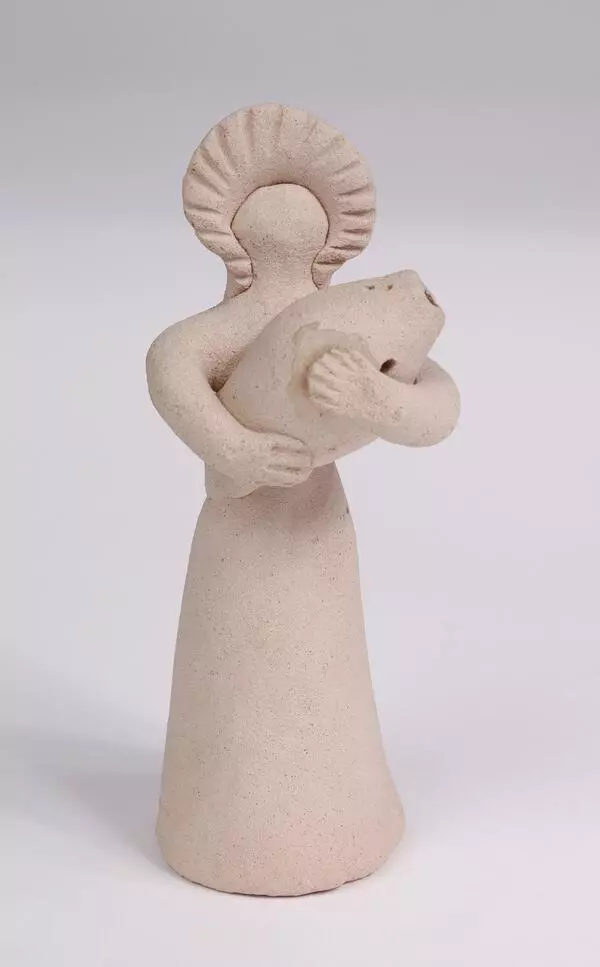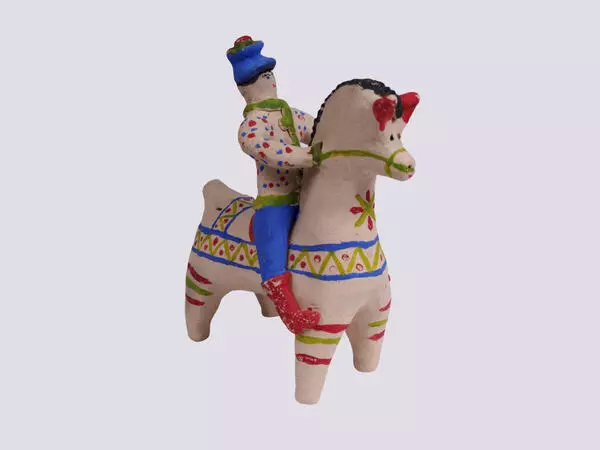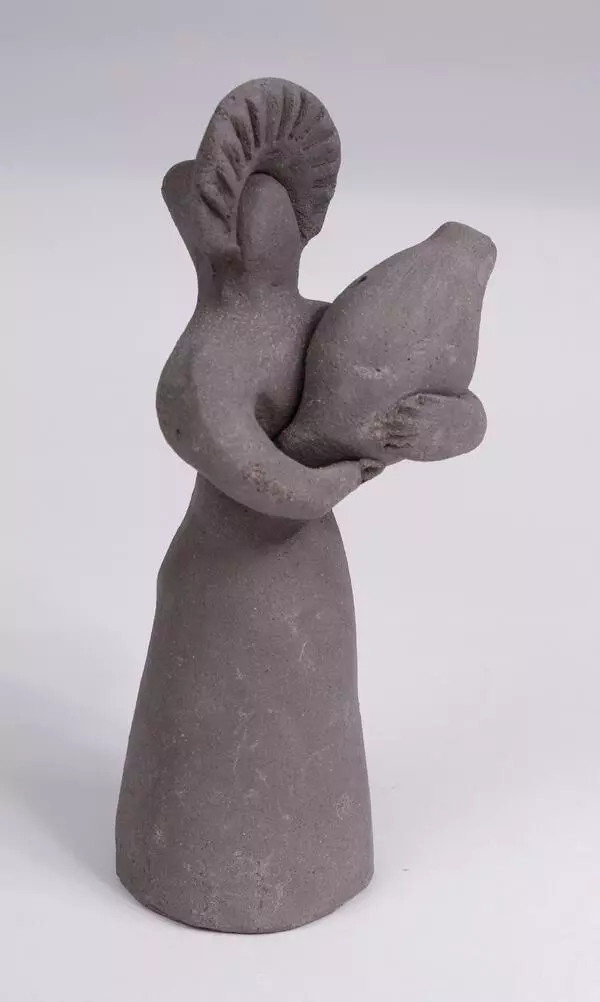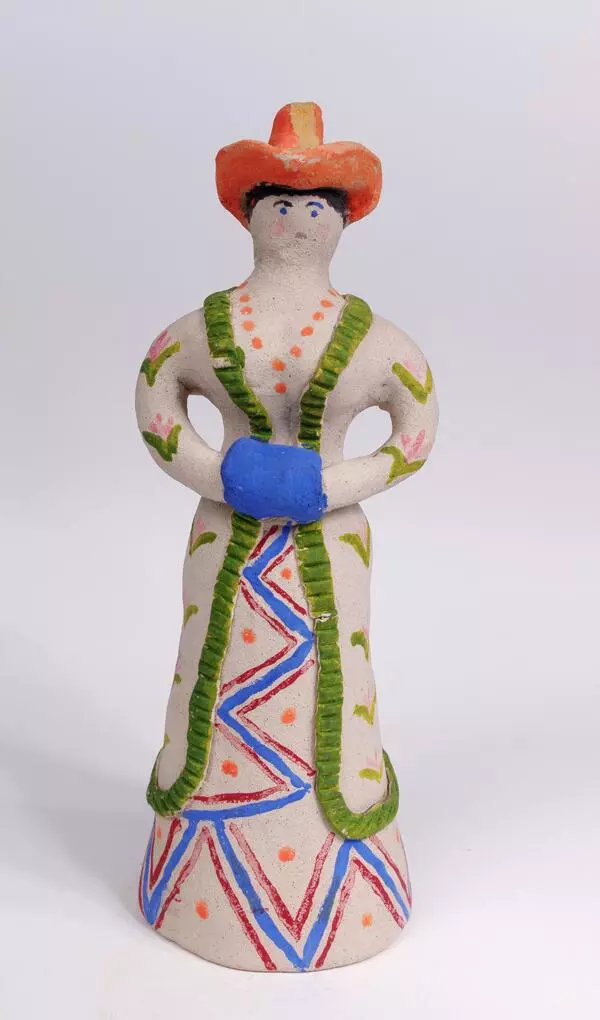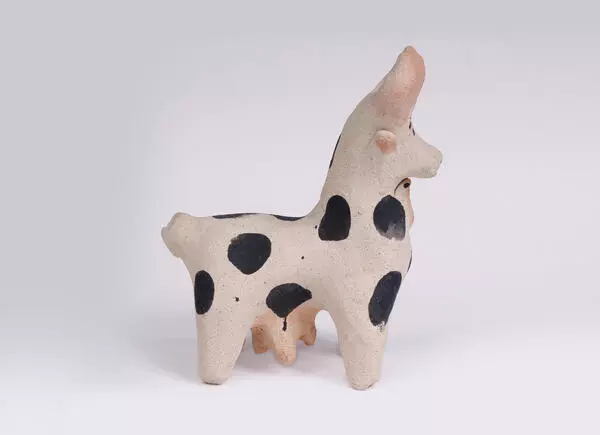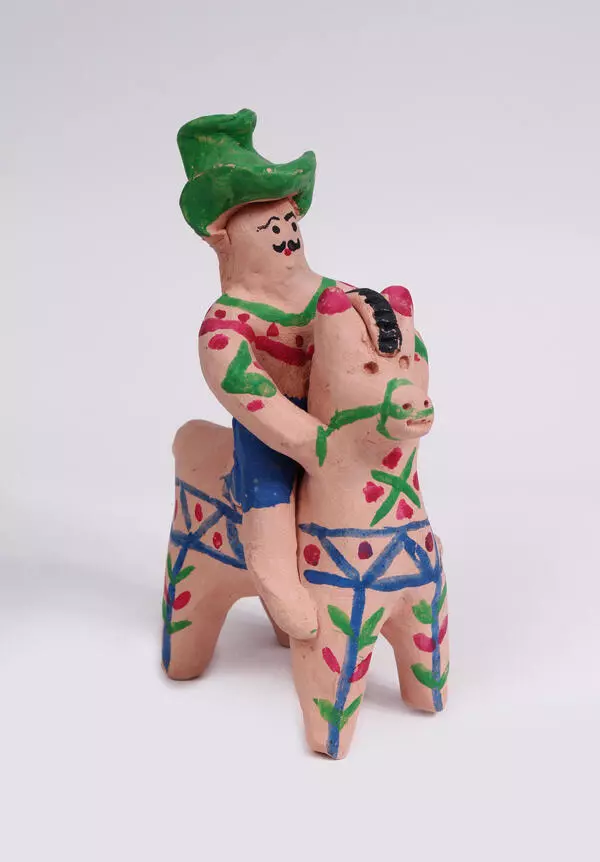Olga and Natalia Goncharova created the She-Bear toy in 1989. Apart from the traditional figurine with a jug-whistle, the Goncharova sisters have designed 12 new varieties of a bear — with an accordion, a barrel of honey or water, a cockerel, a basket, and others. The she-bear in an apron presses a colored basket with her paw.
Clay toys have been known in Russia since ancient times. The earliest of them appeared on the territory of ancient Russian cities — Kyiv, Novgorod, Moscow, Kolomna, Radonezh. They were created when the distant ancestors still worshiped pagan gods. In the olden days, masters modeled such items not only for fun but also for rituals of magic. The figurines played the role of talismans against evil spirits, called on the good gods to send a large harvest, protect people, save the inhabitants of the settlement from misfortune. The toy was modeled and painted strictly by the book.
The all-Russian canons also established a simple set of forms: a woman, a rattle, a bird, a konik (a horse). These minimalistic images represented all four elements — fire, earth, air, and water. In some crafts, including the one in Stary Oskol, this list also included the bear.
The bear figurine first appeared in the Stary Oskol clay toymaking in the late 19th century. At that time, the family of Mikhail Goncharov, a third-generation potter, lived in the Cossack settlement. His wife Anastasia, together with their three daughters Yevdokiya, Olga, and Natalia modeled clay toys. They worked with the remnants of the clay which was not used to make jugs, pots, or crates — those items the head of the family made for sale.
It is through the efforts of the Goncharova sisters that the Stary Oskol toy continues to live today. The craft almost disappeared in the 1930s due to severe famine and huge taxes: many craftsmen passed away at that time, and the remaining toymakers modeled items without the tax inspectors knowing. A researcher Boris Shevchenko wrote that in the 1940s, rag-and-bone men even began importing whistles from other places to Stary Oskol. But since the 1980s, the Goncharova sisters have put their hands to their favorite work again. They passed on their skills to several students, and now the ancient traditions continue in new forms.
Clay toys have been known in Russia since ancient times. The earliest of them appeared on the territory of ancient Russian cities — Kyiv, Novgorod, Moscow, Kolomna, Radonezh. They were created when the distant ancestors still worshiped pagan gods. In the olden days, masters modeled such items not only for fun but also for rituals of magic. The figurines played the role of talismans against evil spirits, called on the good gods to send a large harvest, protect people, save the inhabitants of the settlement from misfortune. The toy was modeled and painted strictly by the book.
The all-Russian canons also established a simple set of forms: a woman, a rattle, a bird, a konik (a horse). These minimalistic images represented all four elements — fire, earth, air, and water. In some crafts, including the one in Stary Oskol, this list also included the bear.
The bear figurine first appeared in the Stary Oskol clay toymaking in the late 19th century. At that time, the family of Mikhail Goncharov, a third-generation potter, lived in the Cossack settlement. His wife Anastasia, together with their three daughters Yevdokiya, Olga, and Natalia modeled clay toys. They worked with the remnants of the clay which was not used to make jugs, pots, or crates — those items the head of the family made for sale.
It is through the efforts of the Goncharova sisters that the Stary Oskol toy continues to live today. The craft almost disappeared in the 1930s due to severe famine and huge taxes: many craftsmen passed away at that time, and the remaining toymakers modeled items without the tax inspectors knowing. A researcher Boris Shevchenko wrote that in the 1940s, rag-and-bone men even began importing whistles from other places to Stary Oskol. But since the 1980s, the Goncharova sisters have put their hands to their favorite work again. They passed on their skills to several students, and now the ancient traditions continue in new forms.
